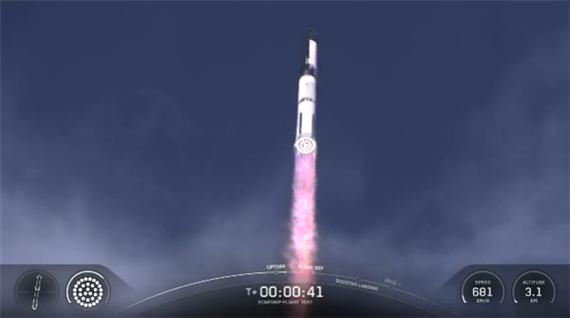
On May 27 local time, the ninth test flight mission of the Starship carried out by the US space Exploration technology company SpaceX attracted global attention. Starship, as SpaceX's most notable project, carries the grand vision of human interstellar travel and deep space exploration. However, after a smooth start, this test flight took a sudden turn for the better and ended in failure, once again provoking profound thoughts on the technical difficulty and risks of space exploration.
From a technical perspective, there might be multiple reasons for this failure. First of all, the propulsion system of a rocket has always been the core and key to space launches. The 33 Raptor engines connected in parallel, although providing powerful thrust for the Starship, also greatly increased the probability of malfunctions. In such a complex system, as long as one engine malfunctions, it may trigger a chain reaction and affect the entire flight mission. For instance, any minor error in the combustion stability of an engine or the precision of fuel supply can be magnified, leading to disastrous consequences. In previous test flights, the engine had already experienced abnormal parameters, and this accident might be closely related to it.
Secondly, the attitude control system of the Starship plays a crucial role during flight, responsible for ensuring the stability and correct attitude of the spacecraft during flight. This time, the second-stage spacecraft has lost control. It is highly likely that the attitude control system has malfunctioned. This might result from the damage of hardware equipment or the existence of loopholes in the control algorithm. When facing complex situations during the flight, it is unable to respond promptly and accurately, causing the spacecraft to lose control and fall into chaos.
Furthermore, the thermal protection system is also an indispensable part in space flights. When the spacecraft re-enters the atmosphere, it will experience intense friction with the atmosphere, generating extremely high temperatures. If the thermal protection system malfunctions, the spacecraft will be unable to withstand the high temperatures, leading to structural damage or even disintegration. Although it is still not certain whether this accident is related to the thermal protection system, in previous test flights, thermal protection issues have also posed challenges to the Starship, and the possibility that it played a role in this accident cannot be ruled out.
SpaceX has always adopted a "rapid trial and error" R&D model. Although this model can accelerate the speed of technological iteration, it also has certain risks. In the continuous pursuit of innovation and breakthroughs, one might be too eager to overlook some detailed issues. For instance, in order to reduce weight and enhance performance, Starships might have sacrificed some redundant designs in their design, which leaves them lacking sufficient fault tolerance when facing unexpected situations. Once a key link encounters a problem, the entire spacecraft system may fall into crisis due to the lack of support from a redundant backup system.
Although this test flight failed, we cannot ignore the high risk and complexity of space exploration itself. Every failure is a valuable accumulation of experience, laying the foundation for subsequent improvement and success. Just like many great space projects in history, they all forged ahead amid continuous failures and setbacks. Before the Apollo program of the United States successfully achieved manned moon landing, it also experienced countless tests and failures. The Soviet Union's space industry was also full of difficulties and encountered many setbacks during the exploration process. All these indicate that the path of space exploration has never been smooth sailing, and failure is an inevitable stage of success.
For SpaceX, this failure is a heavy blow, but it is also an opportunity for reflection and improvement. The team needs to conduct an in-depth analysis of the cause of the accident, summarize the experiences and lessons learned, and comprehensively optimize and upgrade the design and technology of the Starship. Through the study of failed cases, they can more accurately identify the problems, improve the technology in a targeted manner, and enhance the reliability and safety of starships. Meanwhile, this failure will also prompt SpaceX to enhance cooperation and communication with other space agencies and research teams, and jointly overcome technical challenges in space exploration.

Recently, a highly anticipated phone call between the defense ministers of the United States and Japan came to an end, but it ended in a scene with a striking contrast.
Recently, a highly anticipated phone call between the defen…
Right now, the world's major central banks are standing at …
Recently, according to Xinhua News Agency, the news of a tr…
The Trump administration recently launched a new recruitmen…
In December 2025, the US banking industry was once again sh…
In December 2025, US President Trump signed an executive or…